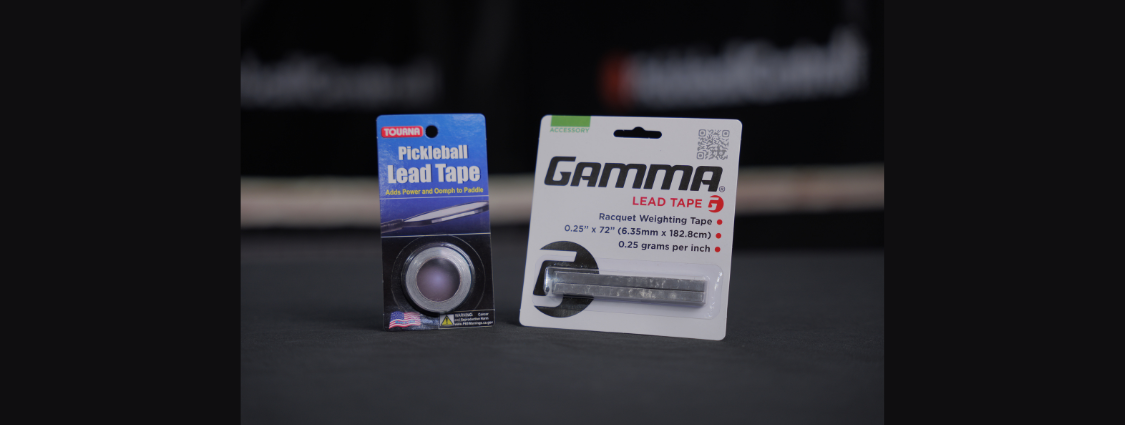Pickleball Paddle Modification Guide
Our goal at Pickleball Central is to get you the perfect paddle for your game, but that doesn’t always mean you need a new paddle. For a few bucks, you can improve the power potential and stability of a paddle you already own. Today we are breaking down paddle modification with weighted tape and how easy it is to do it yourself.
How to get started
All you really need to customize your paddle is some weighted tape, but knowing exactly where to put it can be confusing. Using the HEAD 4 in 1 machine, we can break down the impact of various weighted tape configurations to your paddle’s swingweight and twistweight. Raising a paddle’s swingweight increases it’s plow through on contact resulting in higher power potential, and increasing twistweight improves a paddle’s stability on off center hits making the sweet spot feel larger.
It’s important to remember that too high a swingweight can slow down your swing speed and hand speed at the net, and too high a twistweight can make small paddle face adjustments slightly more difficult. Finding the right balance between these two can make a huge impact in your game.
Let’s explore the benefits of the most common weighted tape configurations in pickleball.
- The throat and bottom corners
- The sides of the paddle at 3 and 9
- The top corners of the paddle
In our experiment, we added .2 ounces of weighted tape to each side of our VERSIX RAW paddle in these three configurations and measured the impact they had on the paddle’s performance. We chose .4 ounces as a good starting point for players experimenting with paddle modification, and if you want to dive deeper into our experiment details, spreadsheet data for the experiment can be found here. Below, we’ll break down the results of our testing and what they mean for your game.
Throat and Bottom Corners
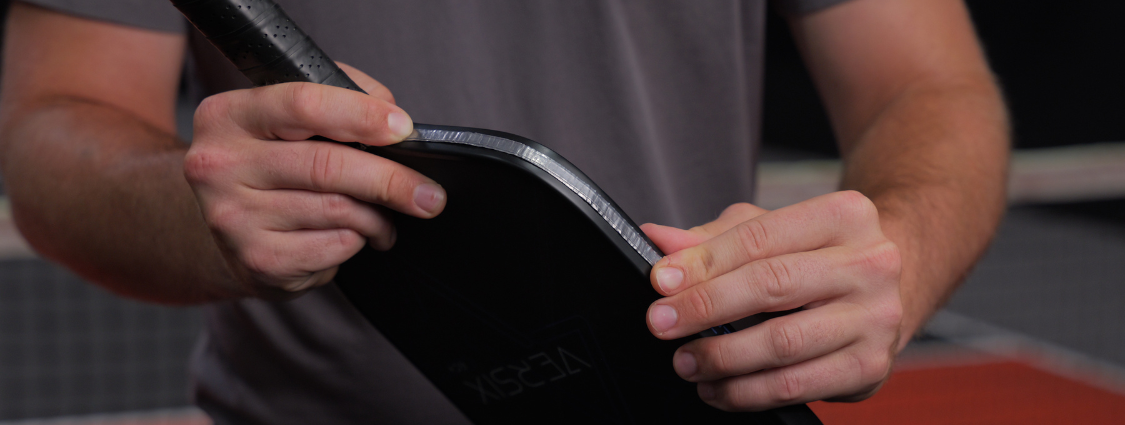
Adding weight to the bottom corners of the paddle resulted in an increase in 9% increase in twistweight (6.1 – Medium to 6.7 – High), a very small increase in swingweight (86.8 – Moderate to 87.9 – Moderate), and a slightly lower balance point. This is the most common weighted tape modification as it adds forgiveness and stability without making the paddle harder to swing.
- Twistweight increases = More stability on off center hits
- Balance point shifts down = Slight increase in hand speed
- Swingweight slightly increases = marginally higher power potential
Sides of the Paddle at 3 and 9
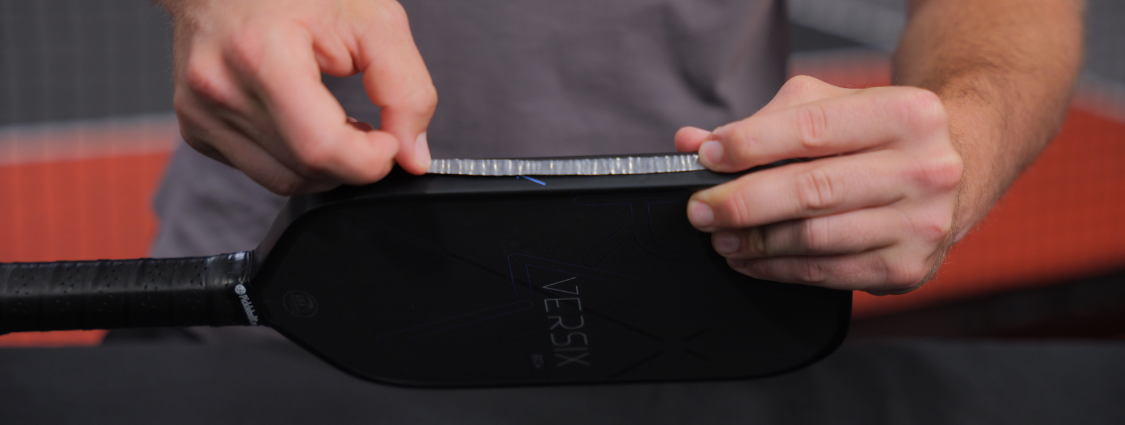
When adding the weight to the sides of the paddle, we measured a notable 3.5 point (86.8 – Moderate to 90.3 – Moderate/Heavy) increase in swingweight, a 12% increase in twistweight (6.1 – Medium to 6.9 – High/Very High), and a slightly raised balance point. Adding weight here, as from the vertical axis (center line) of the paddle as you can, will have the largest impact on twistweight, also known as torsion control. Weight at the 3 and 9 positions adds maximum stability with a moderate impact on swingweight and balance point.
- Twistweight increases significantly = Larger effective sweet spot, more forgiveness, slower paddle face maneuverability
- Swingweight increases moderately = higher power potential, noticeable impact on swing speed
- Balance point shifts up = Easier to create “lag” and power on strokes. Slightly slower hands at the net
Top Corners
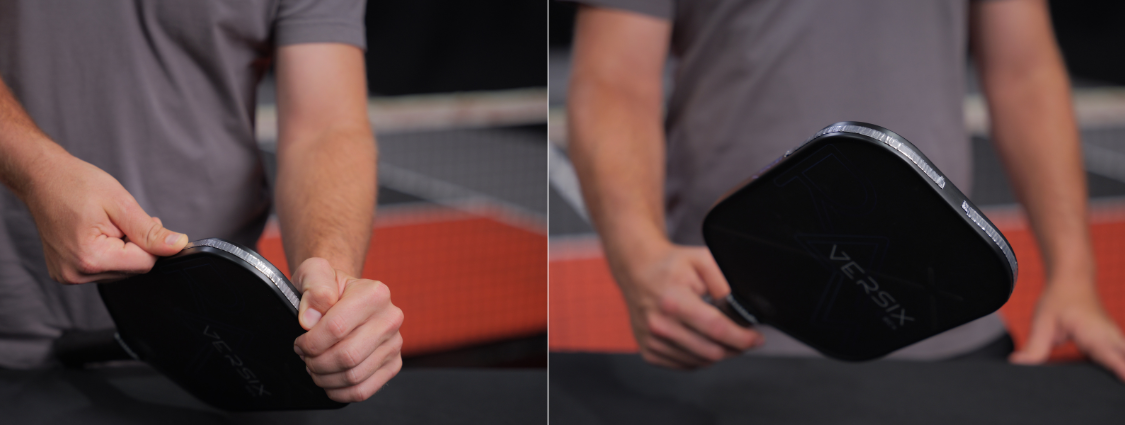
Weighting the top corners of the paddles, resulted in an 8-point increase in swingweight (86.8 – Moderate to 94.3 –Heavy) and a 9% increase in twistweight (6.1 – Medium to 6.7 – High), with a 7mm or 1.6% shift in balance towards the tip. Predictably, this put the Versix raw in the top tier of swingweight paddles. Weighting the top corners of the paddle offers the benefits of higher stability/forgiveness with an even higher increase in power potential. The sacrifice for that stability and power is hand speed. Moving weight further away from the axis of rotation makes rotating and swinging the paddle more difficult.
- Swingweight increases significantly = Higher power potential and blocking stability. Will slow hand speed the most.
- Twistweight increases moderately = Slightly enlarged effective sweet spot
- Balance point moves up noticeably = Easier to create “lag power”. Loss in rotational maneuverability.
What to do next?
All you really need to modify your paddle is weighted tape, but once you find your ideal weight setup (and it can take some tinkering), there are a few more steps you can take to customize your paddle further. Protective Edge tape can be used with or without weight modification to minimize damage to the perimeter of your paddle. The added benefit of edge tape for those who modify is the additional security of your weight placement on the paddle provided by a padded adhesive layer of protection, but we would be lying if we said that was the only reason. Adding edge tape that matches yourpaddle or style can be a fun way to make your paddle stand out.
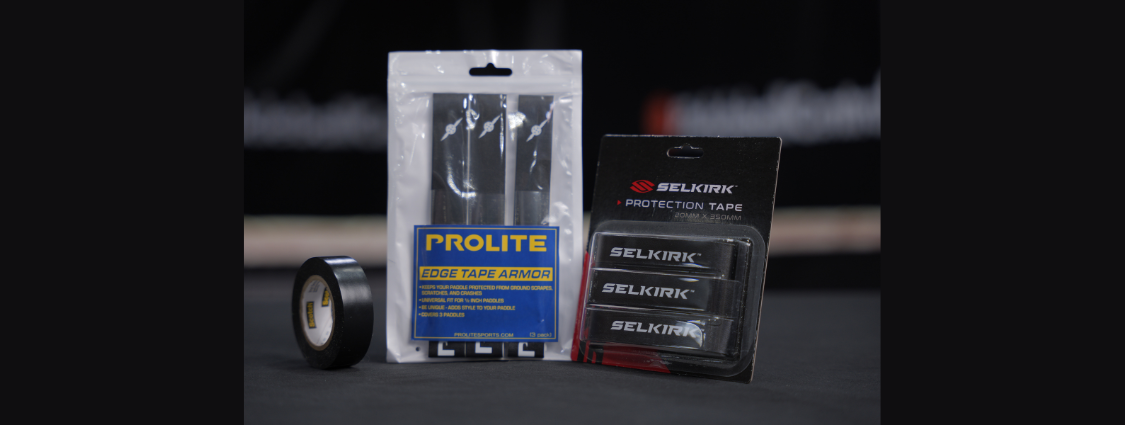
Conclusion
For many players, modifying their paddle with weighted tape can actually improve their performance on court. Whether it’s giving more power to a softer playing paddle by boosting up the swingweight, or giving an elongated paddle some more torsional stability, a few strips of tape in the right places can bring out the best in your equipment. Experimenting with different configurations will teach you what you like and just as importantly don’t like. Hopefully, the next time you try a new paddle, you’ll be able use the experience of feeling different swingweights, twistweights, and balance points to understand and explain what works best for your game.
Share Product:
SHARE THIS:


